You should visit Ireland because of its vibrant culture, friendly locals, and stunning landscapes that range from the Cliffs of Moher to the Ring of Kerry. Additionally, Ireland's rich history and lively cities like Dublin and Galway offer a unique blend of modern attractions and historical sites.
You should visit Scotland because of its breathtaking highlands, ancient castles, and rich traditions that include bagpipes and kilts. Scotland's cities, such as Edinburgh and Glasgow, are known for their cultural festivals, museums, and vibrant arts scenes, making it a diverse and fascinating destination.
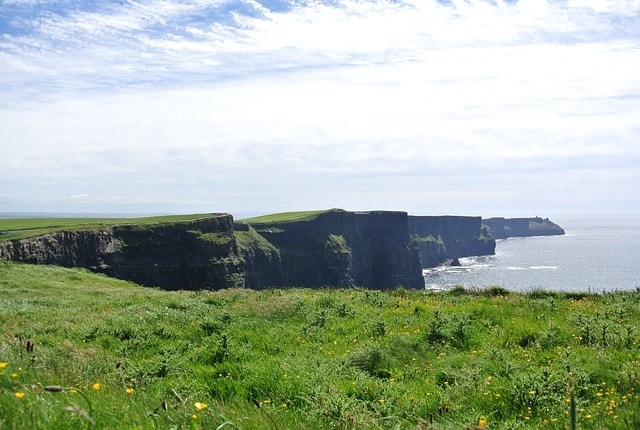
Scotland or Ireland: Which Is More Budget-Friendly?
When planning a budget-friendly trip, both Scotland and Ireland offer varied experiences at different price points. In Ireland, accommodation, especially in cities like Dublin and Galway, tends to be expensive, while rural areas offer more affordable yet still pricey options.
Scotland's cities, such as Edinburgh and Glasgow, also have high accommodation costs but provide more budget options like hostels. Dining in Ireland is generally more expensive, particularly in cities, compared to Scotland's reasonably priced pub meals. Public transportation is more affordable and extensive in Scotland, while Ireland's options are limited and often pricier, especially between rural and urban areas.
Visiting Cork? Here are Best Things to do in Cork Ireland: Awesome Places To Visit, Outdoor Activities to Do
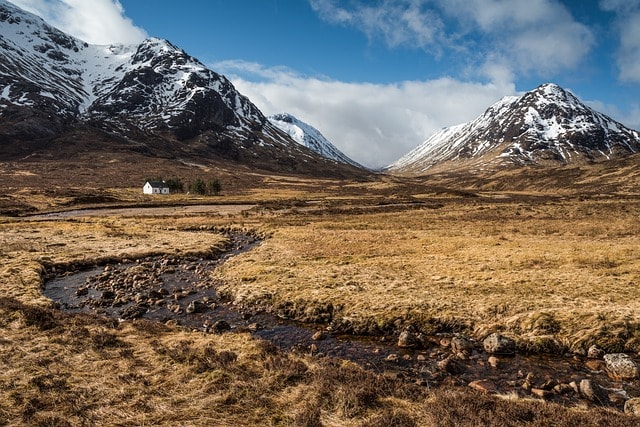
Scotland or Ireland: Which Is More Budget-Friendly?
Ireland is generally more budget-friendly than Scotland. Ireland offers a range of affordable accommodation options, lower food and drink prices, and less expensive transportation. Additionally, many of Ireland's attractions, such as its stunning natural landscapes and historic sites, are free or have low entry fees, making it a more economical choice for travelers.
Visiting Dublin? Here are Best Things To Do In Dublin Ireland: In Depth Guide for 2024
Accommodation Costs
In Ireland, you can find a variety of budget-friendly accommodations, including hostels, guesthouses, and affordable hotels. While Scotland also offers budget options, the prices for similar accommodations are often higher compared to Ireland.
Visiting Limerick? Here are Best Things to do in Limerick Ireland
Food and Drink Prices
Dining out in Ireland is generally less expensive than in Scotland. Ireland boasts numerous pubs and local eateries where you can enjoy hearty meals and drinks at a lower cost. In contrast, dining in Scotland can be pricier, especially in major cities like Edinburgh and Glasgow.
Transportation Expenses
Public transportation in Ireland is relatively affordable, with options like buses and trains connecting major cities and tourist destinations. Additionally, car rentals and fuel costs tend to be lower in Ireland. Scotland's transportation costs, including public transit and car rentals, are generally higher.
Attraction Fees
Ireland offers a wealth of free attractions, including beautiful natural landscapes, historical sites, and cultural landmarks. Many of these sites have little to no entry fees. While Scotland also has many attractions, the entrance fees for popular sites like castles and museums can add up quickly.
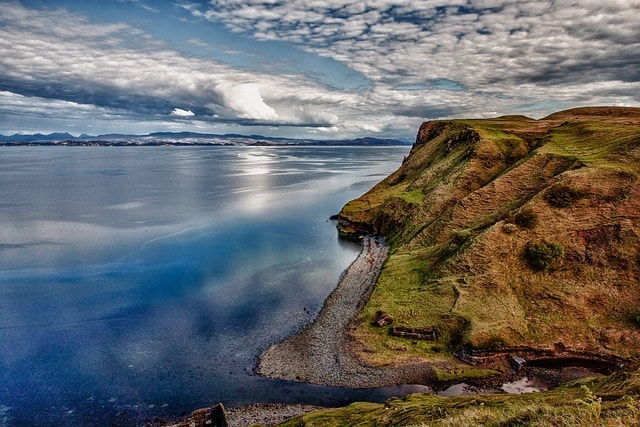
Scotland Vs Ireland: Which Is Easier to Travel Around?
Scotland is generally easier to travel around compared to Ireland. Scotland offers an extensive public transportation network, including trains, buses, and ferries, making it easy to navigate between major cities and tourist destinations. The well-developed rail network and well-maintained roads add to the convenience. On the other hand, while Ireland has a comprehensive public transport system, its rural areas are less accessible without a car, and the rail network is not as extensive. Overall, Scotland's infrastructure provides greater accessibility and convenience for tourists.
Public Transportation Networks
Scotland boasts an extensive public transportation network that includes trains, buses, and ferries. The rail network is particularly well-developed, making it easy to travel between major cities like Edinburgh, Glasgow, and Inverness. Additionally, buses and coaches provide reliable services to more remote areas and islands, ensuring good connectivity across the country.
Ireland also has a comprehensive public transport system with trains and buses connecting major cities and towns. However, the rail network is not as extensive as Scotland's, and some rural areas may be less accessible by public transport. Buses are the primary mode of public transport in rural areas, which may have limited schedules.
Road Infrastructure
Scotland's road infrastructure is well-maintained, with major highways connecting cities and scenic routes through the Highlands. Driving is generally straightforward, though narrow, winding roads in rural areas can be challenging, especially in adverse weather conditions.
Ireland's roads are generally good, but rural areas often have narrow, winding roads that can be challenging for drivers unfamiliar with the terrain. The main highways and motorways provide easy access between major cities and tourist destinations, but driving in rural areas may require more caution.
Scotland or Ireland: Which Offers More Stunning Landscapes?
Scotland and Ireland both offer breathtaking landscapes, each with unique highlights. Scotland is known for its dramatic Highlands, picturesque lochs, and the Isle of Skye's stunning cliffs and Fairy Pools. Its national parks like Loch Lomond and The Trossachs are ideal for hiking, complemented by historic castles and charming villages.
Ireland's scenic beauty includes rolling green hills, rugged coastlines, and iconic sites like the Cliffs of Moher, the Ring of Kerry, and the Dingle Peninsula. Both countries provide unique experiences, with Scotland offering ancient castles and whisky tours, while Ireland features traditional music, historic monasteries, and ancient Celtic sites.
Scotland's Natural Beauty
Scotland is famous for its dramatic landscapes, including the rugged Highlands, picturesque lochs, and sweeping glens. The Isle of Skye is a highlight with its stunning coastal cliffs, Fairy Pools, and the Old Man of Storr. Scotland's national parks, such as Loch Lomond and The Trossachs, offer excellent hiking and outdoor activities. The scenic beauty is complemented by historic castles and charming villages.
Ireland's Scenic Views
Ireland's landscapes are equally captivating, with rolling green hills, rugged coastlines, and ancient ruins dotting the countryside. The Cliffs of Moher are a must-see, offering breathtaking ocean views. The Ring of Kerry and the Dingle Peninsula provide some of the best scenic drives in the country. Ireland's national parks, like Killarney National Park, showcase stunning lakes, forests, and mountains.
Unique Experiences
Both countries offer unique experiences tied to their landscapes. In Scotland, exploring ancient castles set against dramatic backdrops and enjoying whisky distillery tours are popular activities. In Ireland, visitors can experience traditional music sessions in local pubs, explore historic monasteries, and visit ancient Celtic sites like Newgrange.
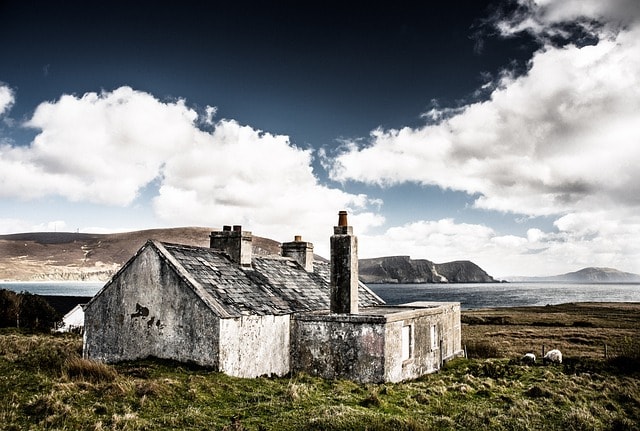
Scotland or Ireland: Which Has Better Climate?
When planning a trip, climate can significantly impact your travel experience. Both Scotland and Ireland have their own unique weather patterns that can influence the best times to visit and the activities you can enjoy. Let’s take a closer look at the weather conditions in both countries to help you decide which one might offer a more favorable climate for your travels.
Scotland's Weather
Scotland is known for its cooler and wetter climate compared to Ireland. The country experiences four distinct seasons, each bringing its own set of weather conditions.
Spring (March to May)
Spring in Scotland sees a gradual warming, with temperatures ranging from 6°C to 15°C (43°F to 59°F). This season is characterized by blooming flowers and longer daylight hours, making it a lovely time to explore the countryside. However, the weather can still be quite unpredictable, with occasional showers.
Summer (June to August)
Summer in Scotland is generally mild, with average temperatures ranging from 10°C to 20°C (50°F to 68°F). This season offers the longest daylight hours, often referred to as "White Nights," especially in the northern parts of the country. While summers are pleasant, rain can occur at any time, so it's wise to be prepared for sudden weather changes.
Autumn (September to November)
Autumn brings cooler temperatures, ranging from 5°C to 15°C (41°F to 59°F), and the landscape transforms with vibrant fall colors. This season can be wet, particularly in the west, but the scenic beauty of the changing foliage makes it a picturesque time to visit.
Winter (December to February)
Winters in Scotland are cold and damp, with temperatures often dropping to around 0°C to 5°C (32°F to 41°F). Snow is common in the Highlands, making it a prime season for winter sports. However, the shorter daylight hours and frequent rain in other parts of the country can limit outdoor activities.
Ireland's Weather
Ireland enjoys a milder and more temperate climate compared to Scotland. The weather is generally more stable, with fewer extremes.
Spring (March to May)
Spring in Ireland is mild, with temperatures ranging from 7°C to 15°C (45°F to 59°F). The season is marked by lush green landscapes and blossoming flowers. Like Scotland, the weather can be unpredictable, with occasional rain showers.
Summer (June to August)
Summers in Ireland are cool, with average temperatures between 10°C and 20°C (50°F to 68°F). The longer daylight hours provide ample time for outdoor activities. The weather is generally pleasant, though the west coast can be wetter due to Atlantic weather systems.
Autumn (September to November)
Autumn in Ireland is mild and relatively dry, with temperatures ranging from 5°C to 15°C (41°F to 59°F). The fall colors add to the scenic beauty, and it’s a great time for exploring the countryside without the summer crowds.
Winter (December to February)
Winters in Ireland are mild compared to Scotland, with temperatures typically staying between 2°C and 8°C (36°F to 46°F). Snow is rare, and the weather is generally more stable, though it can be damp and overcast.
Best Time to Visit Ireland and Scotland
The best time to visit both Scotland and Ireland is during the late spring and summer months, from May to September. During these months, you can expect milder weather, longer daylight hours, and more opportunities for outdoor activities. However, it’s important to note that this is also the peak tourist season, which means higher prices for accommodation and larger crowds at popular attractions.
Comparing the Climate of Ireland and Scotland
When comparing the climates of Scotland and Ireland, Ireland generally has the advantage of milder and more temperate weather. Scotland’s climate is cooler and wetter, particularly in the Highlands and on the west coast. If you prefer a warmer, more stable climate, Ireland might be the better choice. However, if you enjoy cooler weather and don’t mind a bit of rain, Scotland’s dramatic landscapes and unique weather patterns can offer a captivating travel experience.
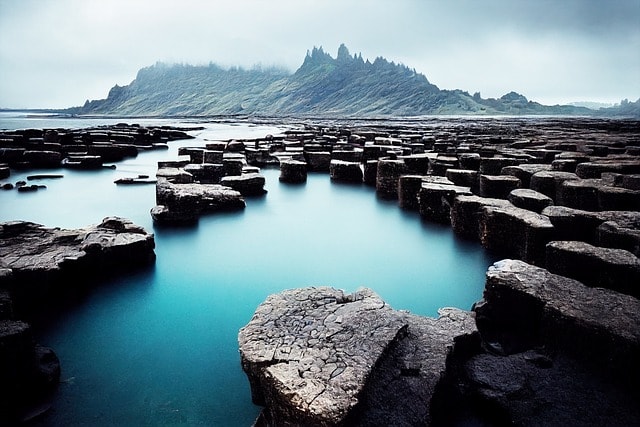
Which Is Safer: Ireland or Scotland?
Ireland and Scotland are both considered very safe countries with low crime rates and efficient police services. Ireland generally has a lower crime rate, with most offenses being non-violent such as petty theft and burglary. In comparison, Scotland also enjoys a relatively low crime rate, with cities like Glasgow and Edinburgh having slightly higher crime rates than rural areas but still being safe destinations.
Both countries benefit from noticeable police presence and prompt response times. Additionally, natural risks are minimal in both places, with occasional storms being the most common issue. Travelers and residents in both Ireland and Scotland generally feel secure, making either country a safe choice.
Crime Rates
Both Ireland and Scotland boast low crime rates, making them generally safe for travelers. Petty crimes, such as pickpocketing and bag snatching, can occur, particularly in crowded tourist areas and historic city centers. Major cities like Dublin, Edinburgh, and Glasgow have neighborhoods where it is wise to exercise extra caution, especially at night. Violent crime is rare in both countries, but it's always prudent to stay aware of your surroundings and take standard safety precautions.
In Ireland, the crime rate has been stable, with most issues related to minor thefts and burglaries. Dublin, being a larger city, has higher crime rates compared to smaller towns and rural areas, but these are still relatively low by global standards. Similarly, Scotland's crime rates are low, but larger cities like Glasgow and Edinburgh do see more incidents than the quieter countryside.
Health and Emergency Services
Both Ireland and Scotland have robust health and emergency services that ensure travelers can receive medical attention when needed. Ireland's public healthcare system, operated by the Health Service Executive (HSE), provides accessible healthcare services across the country. In case of emergencies, travelers can access public hospitals and emergency rooms without significant delays. For non-urgent medical needs, private healthcare facilities are also available, although they come at a higher cost.
Scotland’s healthcare is managed by the National Health Service (NHS), which offers comprehensive and reliable medical services. Emergency services, including ambulances, police, and fire departments, are well-coordinated and efficient. Travelers in both countries can feel confident that they will receive prompt and professional assistance in emergencies.
Natural Hazards
Natural hazards are minimal in both Ireland and Scotland, making them safe destinations regarding environmental risks. The most common natural concerns are weather-related, such as heavy rain, strong winds, and occasional storms. These weather events can sometimes disrupt travel plans, especially in the more remote and coastal areas.
In Ireland, heavy rain can lead to localized flooding, particularly in the west and midlands, but the infrastructure is generally well-equipped to handle such events. Scotland, especially in the Highlands, can experience harsh weather conditions, including snow and ice in the winter months. However, both countries have robust systems in place to manage and mitigate the impacts of severe weather, ensuring minimal disruption to travelers.
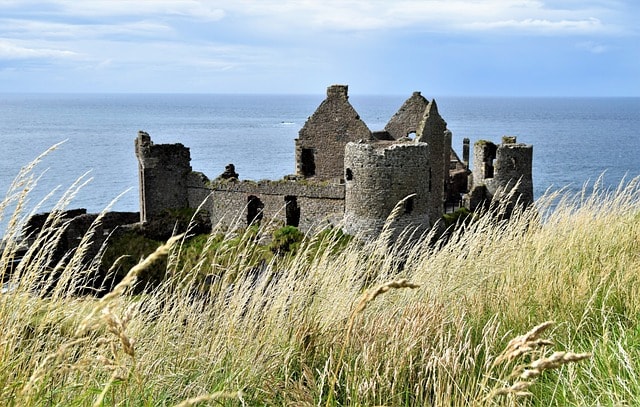
Scotland vs Ireland Population Comparison
Scotland has a population of approximately 5.5 million people, while Ireland has a population of about 5 million people. Despite their similar population sizes, the distribution and density vary between the two countries. Scotland's population is concentrated in urban areas like Glasgow and Edinburgh, whereas Ireland's population is more evenly spread across cities such as Dublin, Cork, and Galway, as well as numerous smaller towns and rural areas.
Both countries have experienced population growth in recent years, with Ireland seeing a slightly faster increase due to higher birth rates and immigration. This comparison highlights that while the total population numbers are close, the demographic patterns and distribution differ significantly between Scotland and Ireland.
Scotland vs Ireland Economy
Scotland's economy is diverse, with strong sectors in oil and gas, renewable energy, financial services, and tourism. Edinburgh, the capital, is a major financial hub, while the North Sea oil fields have historically played a significant role in the country's economic landscape.
Ireland, on the other hand, has seen rapid economic growth over the past few decades, transforming into a tech and finance powerhouse. The country's favorable tax policies have attracted numerous multinational corporations, particularly in the tech and pharmaceutical industries. Dublin, Ireland's capital city, serves as the central hub for these global businesses. Both countries face their own economic challenges and opportunities, making their economic landscapes intriguing for comparison.
Employment and Income Levels
Both countries have relatively high employment and income levels, but Ireland generally boasts higher average wages due to its strong tech and pharmaceutical sectors. This economic prosperity translates into higher living costs, particularly in Dublin.
Tourism Economy
Tourism is a significant contributor to both economies. Scotland attracts millions of visitors annually, drawn by its historical sites, natural beauty, and cultural festivals. Ireland also sees a high number of tourists, especially to iconic sites like the Cliffs of Moher, the Ring of Kerry, and Dublin's cultural attractions. The tourism infrastructure in both countries is well-developed, making it easy for travelers to find accommodations and activities.
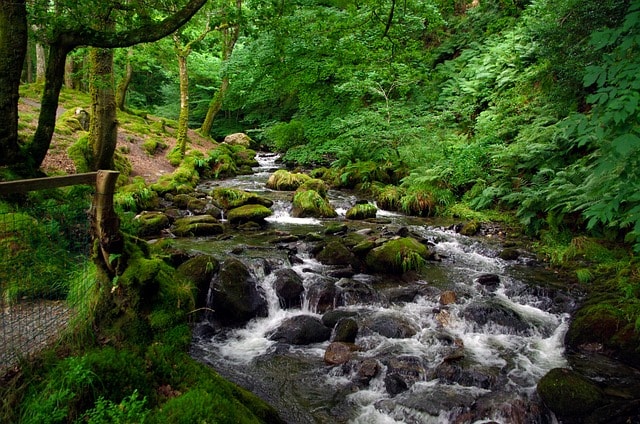
Is It Cheaper to Fly to Ireland or Scotland?
Flying to Ireland is generally cheaper than flying to Scotland, with round-trip flights from the United States to Dublin averaging $500 to $800, while flights to Edinburgh or Glasgow range from $600 to $900. European budget airlines offer lower fares to both destinations, but Ireland tends to have more competitive prices overall, especially during off-peak seasons and with deals from airlines like Ryanair and Aer Lingus.
Airfare Comparison
Generally, flights to Ireland and Scotland are competitively priced, with numerous options available from various destinations. However, flights to Dublin are often cheaper than flights to Edinburgh or Glasgow due to the higher volume of traffic and competition among airlines. Budget airlines like Ryanair and Aer Lingus frequently offer deals on flights to Ireland, making it a more cost-effective option for many travelers.
Flight Availability
Both Ireland and Scotland are well-connected to major cities worldwide. Dublin Airport is the main international gateway to Ireland, while Scotland has several major airports, including Edinburgh and Glasgow. Ireland's central location and well-connected flight routes can sometimes make it easier to find direct flights and better deals.
Seasonal Variations
Flight prices to both countries can vary significantly depending on the season. During peak tourist season (May to September), flights are generally more expensive. Traveling during the shoulder seasons (spring and autumn) can offer more affordable airfare and fewer crowds.
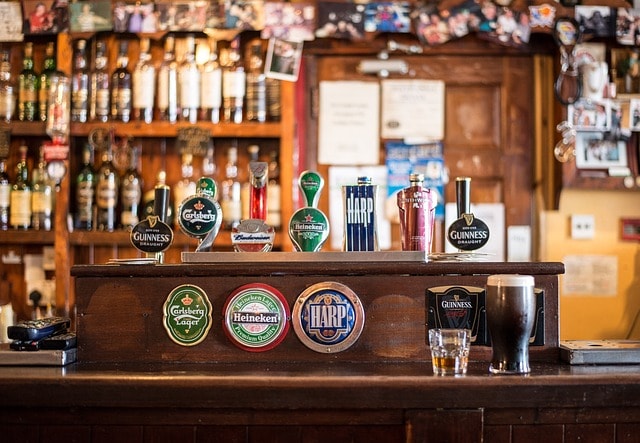
Key Differences Between Scotland and Ireland
Understanding the key differences between Scotland and Ireland can help you make an informed decision about your trip.
Historical Background
Scotland and Ireland share rich and complex histories, but each has its own unique story. Scotland's history is marked by its struggle for independence, its distinct clans, and its famous battles, such as the Battle of Culloden. Ireland's history is characterized by its long fight for independence from British rule, the Great Famine, and its rich Celtic heritage. Both countries offer numerous historical sites, from castles to ancient ruins, each telling a unique part of their story.
Cultural Experiences
Cultural experiences in Scotland often revolve around its music, whisky, and festivals. The Edinburgh Festival Fringe is the world's largest arts festival, attracting performers and visitors from around the globe. Scotland is also famous for its traditional ceilidh dancing and bagpipes.
In Ireland, cultural experiences are deeply tied to pub culture and its music, dance, and literature. Traditional Irish and folk music, sessions in local pubs, the vibrant St. Patrick's Day celebrations, and literary festivals are integral parts of the Irish cultural experience. Both countries offer rich, immersive cultural experiences that reflect their unique heritage and traditions.
Food and Drink
Scotland is known for its hearty cuisine, including dishes like haggis, neeps and tatties, and Scotch pies. Whisky tasting is a major attraction, with numerous distilleries offering tours and tastings. In Ireland, the food scene includes staples like Irish stew, soda bread, and seafood chowder. Ireland is also famous for its beer, particularly Guinness, and whiskey, with many breweries and distilleries open for tours.
Natural Attractions
While both countries boast stunning natural landscapes, the type of scenery differs. Scotland's Highlands, lochs, and coastal cliffs offer dramatic and rugged beauty. Iconic landmarks like Loch Ness, the Isle of Skye, and Ben Nevis are must-see destinations. Ireland's rolling green hills, rugged coastlines, and ancient ruins provide a more pastoral beauty. The Cliffs of Moher, the Giant's Causeway, and the Burren are among Ireland's top natural attractions.
FAQs on Ireland or Scotland
Which country is more affordable to visit, Ireland or Scotland?
Generally, Ireland can be slightly more expensive due to higher accommodation and dining costs, especially in Dublin. However, both countries offer budget-friendly options if you plan carefully.
Is it easier to travel around Scotland or Ireland?
Scotland generally has a more extensive public transportation network, making it easier to travel around, especially by train. In Ireland, renting a car might be more necessary for reaching rural areas.
Which country has better weather, Scotland or Ireland?
Ireland generally has a milder climate compared to Scotland, which can be colder and wetter, especially in the north and the Highlands.
Are Ireland and Scotland safe for tourists?
Yes, both countries are considered safe for tourists with low crime rates. However, standard precautions should be taken, especially in crowded tourist areas.
Do I need a visa to travel to Ireland or Scotland?
Visa requirements depend on your nationality. For EU citizens, no visa is required for either country. For non-EU travelers, check the specific visa requirements for the UK (Scotland) and Ireland.
